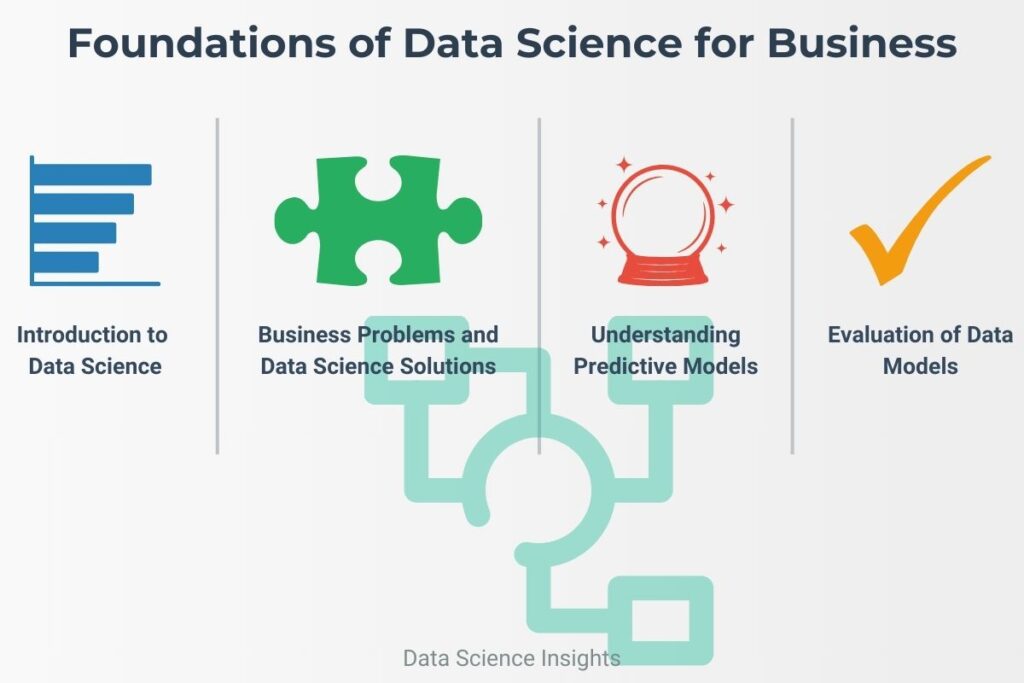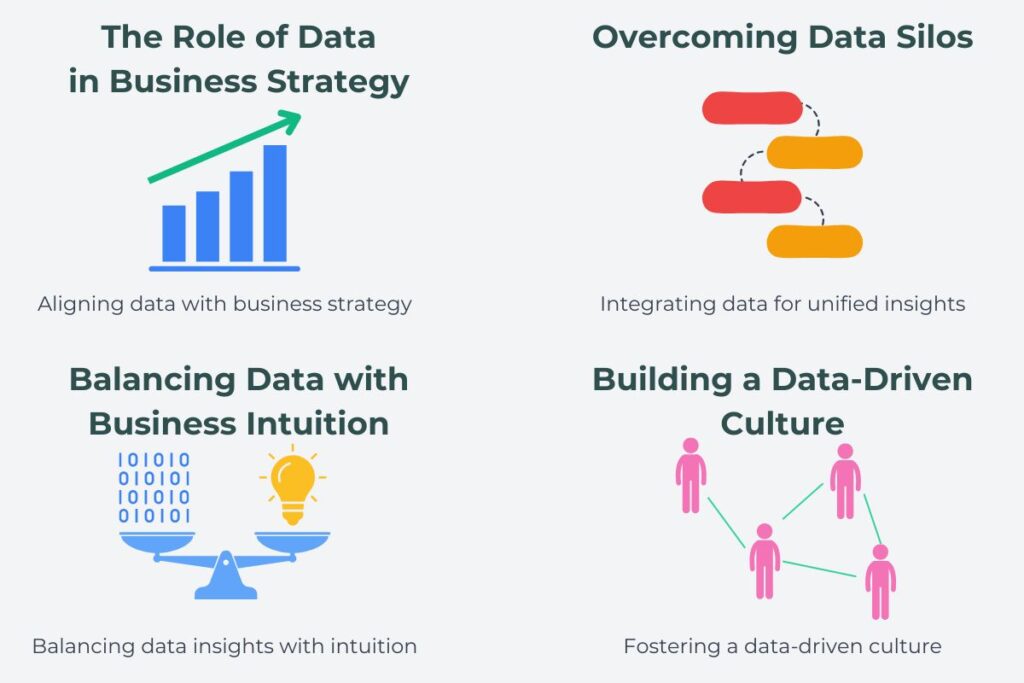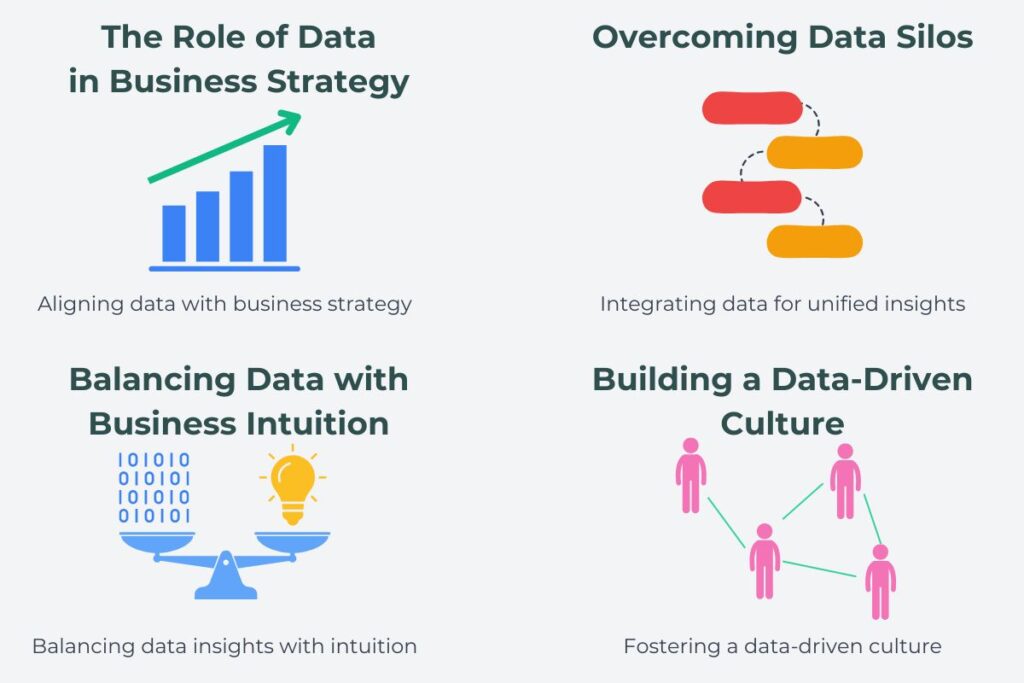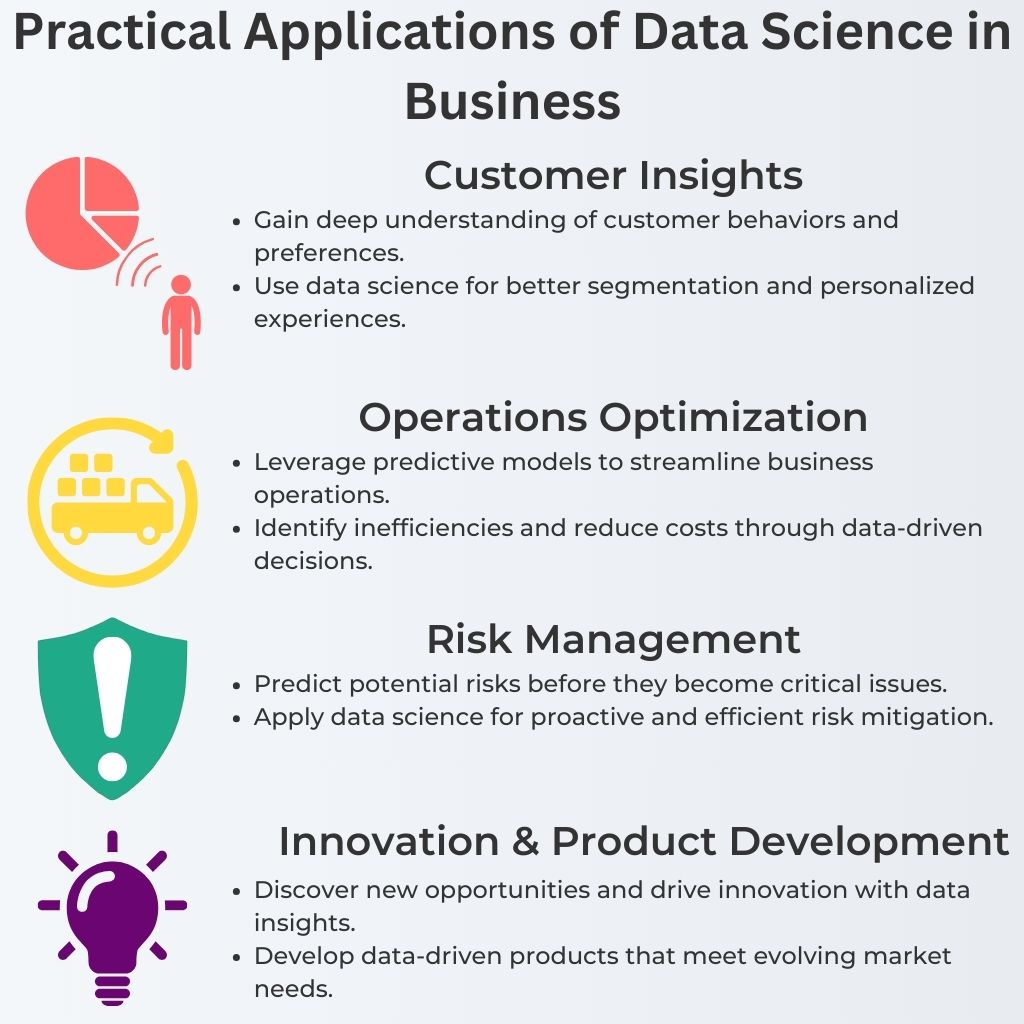Introduction
Foster Provost and Tom Fawcett’s book Data Science for Business is essential reading for anybody who wants to comprehend decision-making based on data. People widely recognize this book’s effective application of data science in practical business settings, contributing to Data Science Business Success. It addresses crucial ideas, such as assessing model performance and predictive modeling. This makes it highly pertinent in the big data age we live in today. This essay will examine and relate its significant concepts to more general talks from our earlier Big Data Revolution piece.
Section 1: Foundations of Data Science Business Success
1.1 Introduction to Data Science
Their book Data Science for Business emphasizes the value of applying data science to business problems. They strongly emphasize comprehending business demands first and then using data science methodologies to achieve those objectives. Decision-makers can, therefore, use data-driven insights to improve outcomes by utilizing this pragmatic approach, which makes data science relevant and approachable.
1.2 Defining Business Problems for Data Science Business Success
They say the first step in developing valuable data science applications is determining the appropriate business problem. They stress that correctly applying data science techniques is ensured by defining the problem. Driving meaningful, data-driven solutions that benefit enterprises requires this synergy between data analysis and business objectives. Data Science for Business is available on Amazon to dive deeper into these concepts.
1.3 Understanding Predictive Models
According to the book, predictive models assist companies in projecting future results by using historical data. It also emphasizes logistic regression and decision trees as effective instruments for predicting consumer behavior and industry trends. By empowering firms to make better decisions, these models improve overall company strategy and capacity to adapt to changing circumstances.
1.4 Evaluation of Data Models
The book emphasizes the importance of evaluating prediction models to ensure their accuracy and reliability. Subsequently, it reviewed key metrics, including precision, recall, and AUC-ROC, which offer practical guidance for assessing model performance. This evaluation guarantees that data-driven insights are valuable and actionable by helping businesses balance model complexity and real-world usability.

Section 2: Data-Driven Decision Making
2.1 The Role of Data in Business Strategy
Provost and Fawcett highlighted that data-driven decisions must align with a company’s business objectives. They then considered practical ways companies could obtain competitive advantages by incorporating data insights into their strategies. They also emphasized that executive buy-in is critical for any data-driven endeavor. Our article Big Data Revolution also demonstrated that effective data use positively impacted corporate strategy.
2.2 Overcoming Data Silos
Next, Provost and Fawcett discussed that data silos often hinder businesses from effectively using data science. Then, they outlined the challenges involved in integrating data from different departments. Subsequently, they offered several solutions for breaking down data silos allowing businesses to achieve unified insights. Our earlier article also discussed how data silo removal helps in adopting comprehensive data-driven strategies.
2.3 Balancing Data with Business Intuition
Provost and Fawcett make the insightful point that data science complements and can never replace human intuition. They subsequently provide several case studies demonstrating businesses successfully blended data insights with leadership experience. Therefore, they argued that companies must balance data-driven approaches and traditional business acumen. The Big Data Revolution article also supported the idea that businesses must correctly combine data and intuition.
2.4 Building a Data-Driven Culture for Data Science Business Success
Provost and Fawcett highlight the criticality of a data-driven culture for long-term business success. They argue that creating this culture is foundational for companies to adopt data science into strategic decision-making successfully. They then provide practical guidance for businesses to foster a data-driven thinking culture. An example is that businesses must invest in data literacy across the organization.

Section 3: Key Techniques in Data Science
3.1 Data Mining
Data mining is the backbone of many data analytics processes. Provost and Fawcett explain this concept in their book. The Big Data Revolution also highlights the importance of data mining in analytics. Both sources emphasize data mining’s critical role in uncovering valuable insights. Provost and Fawcett introduce several data mining techniques, including cluster and association rule learning. They explain how these techniques uncover hidden insights in data and help identify valuable patterns that may otherwise go unnoticed.
3.2 Machine Learning for Data Science Business Success
Provost and Fawcett introduced machine learning, central to modern data science. They then explained how businesses can apply machine learning algorithms to improve operations. The authors also provided tutorials on machine learning techniques, including classification, regression, and ensemble methods. They also highlighted machine learning’s ability to automate decision-making processes, allowing businesses to make better data-driven decisions.
3.3 Data Visualization
An essential aspect of data science is to communicate insights to users effectively. Therefore, data visualization is critical to the data science arsenal for effectively communicating insights to users. Consequently, Provost and Fawcett discussed best practices for visualizing user data insights. They stress the importance of presenting insights clearly to non-technical stakeholders, whose buy-in is often crucial. Our previous blog highlighted Data visualization as a key tool for communicating big data insights.
3.4 Ethical Practices for Data Science Business Success
Organizations need to address several ethical challenges associated with data science. Furthermore, the wider community and regulatory authorities demand that organizations behave responsibly when implementing data science. Provost and Fawcett touch on issues related to ethical behavior, including data privacy, bias in algorithms, and responsible AI use. They then provide recommended best practices for ethical data science within a business context. Our blog, Big Data Revolution, explores the broader implications of big data and highlights similar themes.

Section 4: Practical Applications of Data Science in Business
Provost and Fawcett also explore business areas where data science processes can benefit.
4.1 Customer Insights
Customer behavior and preferences are key business areas that data science can benefit from through deep insights. Therefore, understanding customer behavior is crucial for businesses in the big data era. Provost and Fawcett enumerate several techniques for customer segmentation and personalization based on insights derived from data science. They also discuss how businesses can use these insights to enhance the customer experience. You should check this book out on Amazon to explore their recommendations around customer insight.
4.2 Operations Optimization for Data Science Business Success
Businesses have always had the goal of operational optimization to improve efficiency, resulting in improved profitability. Therefore, an essential application of data science is to optimize business operations by identifying inefficiencies. Consequently, Provost and Fawcett describe how applying predictive models can streamline supply chains and reduce costs. They also offered examples of companies that successfully optimized operations using data science.
4.3 Risk Management
Risk management is another critical business area that data science promises to benefit. Provost and Fawcett also consider applying predictive analytics to risk management to help identify potential risks before they become issues. Their book covers risk mitigation strategies that leverage data science insights. Also, risk management through big data aligns with key themes explored in the Big Data Revolution.
4.4 Innovation and Product Development
Data science is also applied to developing new products, thereby driving innovation. Therefore, Provost and Fawcett demonstrate how businesses can analyze data to identify opportunities for new product offerings. Subsequently, they highlighted several examples of data-driven innovation in various industries. The Big Data Revolution also discusses big data’s role in driving innovation.

Conclusion
Provost and Fawcett’s book Data Science for Business provides practical insights into applying data science to generate business value. They emphasize that data science is not solely for data scientists but for decision-makers across all levels of an organization. Hence, they demonstrated that businesses can gain a competitive edge in the rapidly evolving data landscape by leveraging data science. Their book also seamlessly connects with the themes explored in our Big Data Revolution article. Explore more practical insights in Data Science for Business, available on Amazon.


